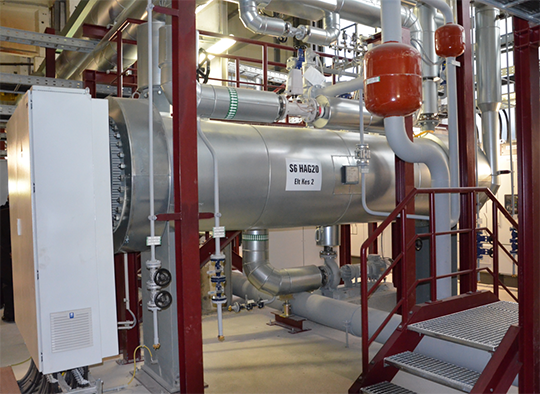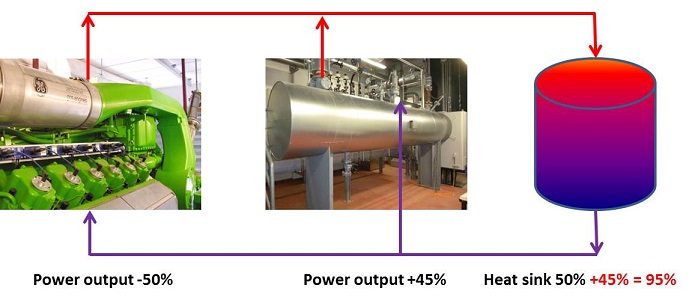Power to Heat
Power to Heat

Initial situation
In Germany adjustment between power production and consumption currently causes imbalance in the power grid frequency. As a result there is an extended need of supplemental reserve energy. Power generating systems and consuming systems which are able to react flexible on this demand have a huge additional revenue potential that is used by more and more peripheral systems already or is about to be used at short notice.
Flexible systems will counteract the particular grid situation by changing their power output. Next to conventional systems as of January 1st, 2012 so called EEG-systems can join this market opportunity subject to direct marketing conditions.
Concept
Block-type thermal power stations intending to supply negative supplemental reserve energy are restricted in participating in the supplemental reserve energy market by their inflexible heat concept. This is due to the fact that a reduction of performance will cause a significant lack of heat production with a related under-supply of the heat sink.
With the Power to Heat (P2H) – technology even these systems can combine the areas of heat and power supply and are enabled to participate in the additional revenue potential subsequently offering significantly more flexibility to the operator.
With installed P2H technology upon a call of offered supplemental reserve energy there will be no more direct control of the Power-Generating-Unit through the responsible Transmission System Operator. Rather a heat carrier will be heated up with electric energy. The heat sink will therefore be kept stable by combining block-type thermal power stations with P2H even when in governed speed mode allowing you to fulfil your contractual obligations. The produced heat will be conveyed to the consumer via the existing heat infrastructure. As a result, existing heating networks and district heating systems can be used as buffer storage to peak-loads of the power grid. This is economically meaningful to the general economy as well as economically advantageous to each single facility.
Areas of application
This solution is directed to qualified prospects who have a decentralised production unit with heat supply and who are interested to offer negative supplemental performance to the market. Incurred are for example combined heat and power generation units with a relevant heat sink. It is an essential pre-qualification that both, the power generation unit as well as the P2H unit are behind the same metering point.
Control occurs is in combination with the block-tape thermal power generation unit and the system controls, the P2H module contains a Profi-bus module.
Alternatively the P2H unit can be used in pure consumer mode integrated via a virtual power generation system and considered a discrete technical unit. Control occurs directly from the P2H unit.
Application example of Power to Heat

Your advantages at a glance
– Extended flexibility of the production unit / block-type generator and warrented heat supply at the same time
– Cost efficient alternative compared to extension of heat storage
– Higher system effectiveness of approximately 95%
– Easy technical implementation
– Infinitely variable unit
– No use of fossile fuels
